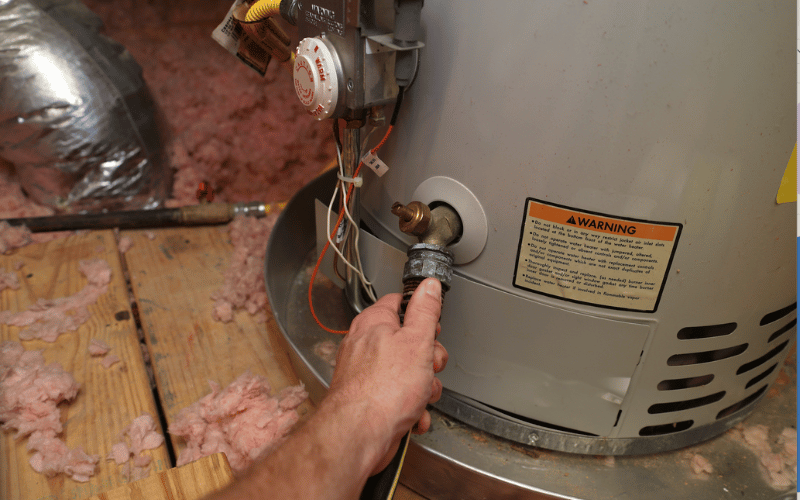Professional Advice for Maintaining Your Home's Hot Water System
Professional Advice for Maintaining Your Home's Hot Water System
Blog Article
They are making a number of good points relating to How to Maintain a Hot Water Heater in a Few Simple Steps as a whole in this content following next.

Warm water is essential for everyday comfort, whether it's for a revitalizing shower or cleaning recipes. To ensure your warm water system runs efficiently and lasts much longer, regular upkeep is key. This short article supplies practical tips and insights on how to preserve your home's warm water system to prevent disturbances and pricey fixings.
Introduction
Keeping your home's hot water system might seem complicated, however with a couple of simple steps, you can ensure it operates efficiently for many years ahead. This overview covers whatever from comprehending your warm water system to do it yourself maintenance ideas and understanding when to employ specialist aid.
Relevance of Maintaining Your Hot Water System
Regular maintenance not only prolongs the lifespan of your hot water system however additionally guarantees it operates effectively. Ignoring upkeep can lead to decreased efficiency, higher power costs, and also premature failure of the system.
Indications Your Warm Water System Demands Upkeep
Understanding when your warm water system requires interest can stop major issues. Look out for signs such as irregular water temperature level, odd sounds from the heating system, or rusty water.
Comprehending Your Warm Water System
Prior to diving right into upkeep jobs, it's handy to understand the basic components of your hot water system. Generally, this includes the water heater itself, pipes, anode rods, and temperature controls.
Regular Monthly Upkeep Tasks
Routine regular monthly checks can assist capture small problems prior to they intensify.
Flushing the Water Heater
Flushing your water heater eliminates sediment buildup, improving efficiency and lengthening its life.
Monitoring and Replacing Anode Rods
Anode rods protect against deterioration inside the storage tank. Examining and replacing them when broken is important.
Examining and Adjusting Temperature Level Settings
Adjusting the temperature level settings ensures optimum efficiency and safety and security.
Do It Yourself Tips for Maintenance
You can carry out several maintenance jobs on your own to keep your hot water system in top problem.
Checking for Leakages
Frequently examine pipelines and connections for leaks, as these can cause water damage and greater expenses.
Testing Pressure Alleviation Valves
Checking the pressure relief valve ensures it works correctly and stops excessive pressure build-up.
Protecting Pipelines
Protecting hot water pipelines reduces heat loss and can conserve energy.
When to Call a Professional
While do it yourself maintenance is advantageous, some concerns need professional expertise.
Facility Problems Requiring Specialist Help
Instances include significant leakages, electrical problems, or if your hot water heater is constantly underperforming.
Routine Specialist Maintenance Conveniences
Expert upkeep can consist of comprehensive examinations, tune-ups, and guaranteeing conformity with security standards.
Final thought
Regular upkeep of your home's hot water system is necessary for efficiency, durability, and price savings. By complying with these ideas and recognizing when to seek expert aid, you can ensure a reliable supply of hot water without unanticipated disruptions.
How to Maintain an Instant Hot Water Heater
Before tinkering with your hot water heater, make sure that it’s not powered on. You also have to turn off the main circuit breaker and shut off the main gas line to prevent accidents. Also turn off the water valves connected to your unit to prevent water from flowing into and out of the appliance. 2. When you’re done, you have to detach the purge valves’ caps. These look like the letter “T†and are situated on either side of the water valves. Doing so will release any pressure that has accumulated inside the valves while at the same time avoid hot water from shooting out and burning your skin. 3. When the purge valves’ caps are removed, you have to connect your hosing lines to the valves. Your unit should have come with three hoses but if it didn’t, you can purchase these things from any hardware or home repair shops. You can also get them from retail stores that sell water heating systems. Read the user’s manual and follow it to complete this task properly. When the hosing lines are connected, open the purge port’s valves. 4. You should never use harsh chemical cleaners or solutions when cleaning your unit. Make use of white vinegar instead. It should be undiluted and you’ll probably use about 2 gallons. 5. Now flush your water heater. This task should probably take about 40 minutes. We can’t give you specific directions for this because the procedure is carried out depending on the type, model and brand of your heater. With that being said, refer to the user’s manual. 6. When you’re done draining the unit, you have to turn off the purge port valves again. Remove the hosing lines that you earlier installed on each of the water valves. Put the valve caps (purge port) back in their respective places and be very careful so as not to damage the rubber discs that are found inside these caps. 7. Now that everything’s back in place, check your user’s manual again to find out how to reactivate your water heating system. 8. Once it is working, turn one of your hot water faucets on just to let air pass through the heater’s water supply pipes. Leave the tap on until water flows smoothly out of it. https://www.orrplumbing.com/blog/2014/september/how-to-maintain-an-instant-hot-water-heater/

Hopefully you enjoyed reading our article about How to Maintain a Hot Water Heater in a Few Simple Steps. Thanks for spending some time to browse our blog. Feel free to take a moment to share this content if you enjoyed it. Thank you for your time. Return soon.
Get An Estimate Report this page